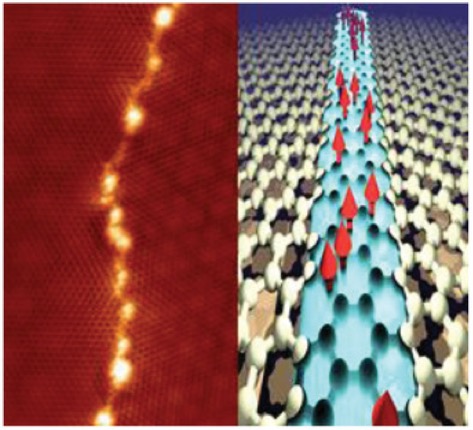Observation of YSR states in graphene
25/04/21 13:33
When magnetic atoms are inserted inside a superconductor, the superconducting order is locally depleted as a result of the antagonistic nature of magnetism and superconductivity. Thereby, distinctive spectral features, known as Yu–Shiba–Rusinov states, appear inside the superconducting gap. The search for Yu–Shiba–Rusinov states in different materials is intense, as they can be used as building blocks to promote Majorana modes suitable for topological quantum computing. Here, the first observation of Yu–Shiba–Rusinov states in graphene, a non-superconducting 2D material, and without the participation of magnetic atoms, is reported. Superconductivity in graphene is induced by proximity effect brought by adsorbing nanometer-scale superconducting Pb islands. Using scanning tunneling microscopy and spectroscopy the superconducting proximity gap is measured in graphene, and Yu–Shiba–Rusinov states are visualized in graphene grain boundaries. The results reveal the very special nature of those Yu– Shiba–Rusinov states, which extends more than 20 nm away from the grain boundaries. These observations provide the long-sought experimental confirmation that graphene grain boundaries host local magnetic moments and constitute the first observation of Yu–Shiba–Rusinov states in a chemically pure system.


